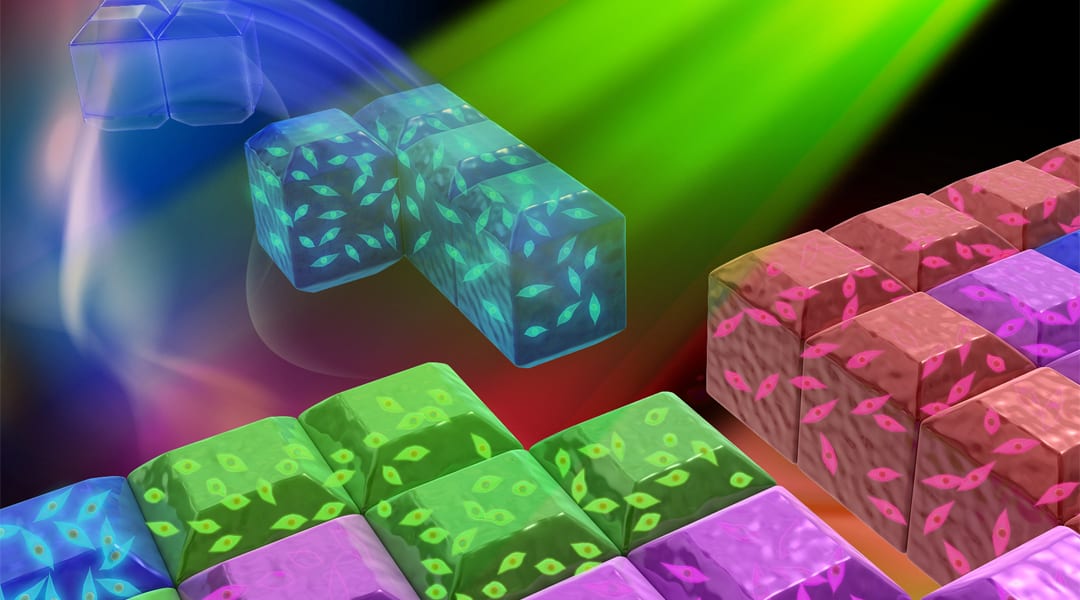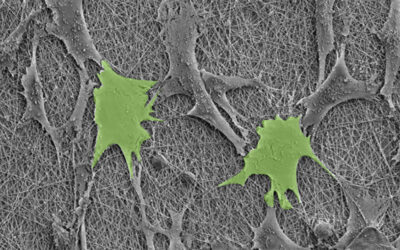A Tetris-inspired approach to fabricate microscale tissue from hydrogel building blocks affords a non-contact assembly method to build complex and reconfigurable 3D architectures. Hydrogel blocks in Tetris shapes, stars and triangles are fabricated quickly and easily using an optofluidic maskless lithography system. The lithography system utilizes a digital micrometer device to provide a dynamic exposure mask, which can be changed on‑demand to produce desired shapes.
The hydrogel Tetris building blocks and other shapes are then transferred to an optically induced electrokinetics (OEK) chip ready to be manipulated, and even stacked similar to every 80’s kids favorite game.
While this all might seem fun and games, this versatile and easy-to-use method of fabrication and manipulation has a serious side. The researchers also fabricated building blocks with embedded cells. Various blocks contained different cell types were then used to build microscale tissues. The aim of the study was to provide a platform to create biomimetic artificial tissue architectures for use in drug screening and tissue engineering. This non-contact manipulation method to form complex and reconfigurable 3D architectures promises to provide just that.
Tissues are complex with independent physiological functions; therefore techniques for assembling cell‑encapsulating building blocks easily are important for tissue engineering. However, finding an excuse to play Tetris as an adult in your working life is always important as well.

















